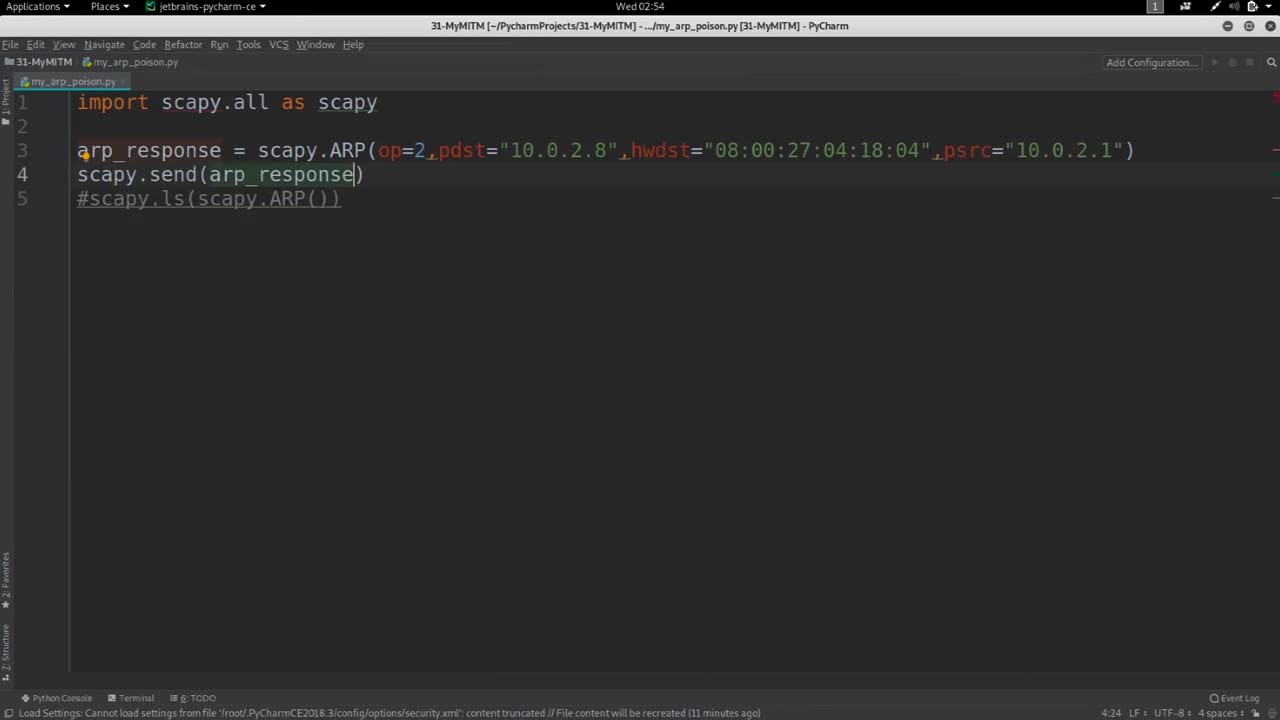Premium Only Content

Chapter-35, LEC-4 | ARP Poison | #rumble #hacking #education #ethicalhacking
#ethicalhacking #hacking #rumble #virel #trending #education
Subscribe to our channel YouTube channel.❤️
/@thecybersecurityclassroom
Followe me on Rumble.💕
/@the1cybersequrityclassroom
ARP poisoning, also known as ARP spoofing or ARP cache poisoning, is a type of cyber attack that involves manipulating or poisoning the Address Resolution Protocol (ARP) cache of devices on a local area network (LAN) to intercept, redirect, or modify network traffic.
In a typical ARP poisoning attack, the attacker sends malicious ARP messages to the LAN, pretending to be another device on the network. These ARP messages contain fake MAC address mappings, associating the attacker's MAC address with the IP address of a legitimate device, such as the default gateway or another device on the LAN. As a result, when devices on the LAN try to communicate with the legitimate device using its IP address, they are misled by the fake MAC address mapping in the poisoned ARP cache and send the network traffic to the attacker's MAC address instead.
Once the attacker receives the intercepted network traffic, they can analyze, modify, or forward it to the intended recipient, allowing them to eavesdrop on the communication, perform man-in-the-middle attacks, steal sensitive information, or disrupt network operations. ARP poisoning attacks can be carried out using various tools and techniques, such as ARP spoofing software, hardware devices, or even manual manipulation of ARP messages.
ARP poisoning attacks pose significant security risks, as they can compromise the confidentiality, integrity, and availability of network communications. They are often used by malicious actors to perform network reconnaissance, launch further attacks, or gain unauthorized access to sensitive data or systems. Detecting ARP poisoning attacks can be challenging, as they occur at the data link layer of the OSI model and do not leave traces in higher-layer network logs.
To protect against ARP poisoning attacks, it is essential to implement proper security measures, such as using static ARP entries, enabling ARP spoofing detection and prevention mechanisms, segmenting LANs, and regularly monitoring and updating ARP caches. Network administrators should also educate users about the risks of ARP poisoning and encourage safe network practices, such as verifying MAC address mappings and reporting suspicious network behavior.
#hacking #growthhacking #biohacking #ethicalhacking #lifehacking #whacking #hackingout #happyhacking #brainhacking #travelhacking #househacking #brainhackingum #hackingtools
#bushwhacking #hacking_or_secutiy #porthacking#porthacking #belajarhacking #hackinginstagram #growthacking #biohackingsecrets #realityhacking #neurohacking #hackingnews #funnelhacking #mindhacking #funnelhackinglive #hackinglife #termuxhacking #learnhacking #bodyhacking #patternhacking #biohackingsuccess #ikeahacking #hackingorsecurity #russianhacking #traumahacking #shackingup #hackinghealth #growthhackingtips #wifihacking
-
 15:55
15:55
TSPLY
1 day agoThe Media Is Very Afraid Of FBI Director Kash Patel
47.2K37 -
 6:57
6:57
Cooking with Gruel
21 hours agoMake Cheese Great Again
37.5K12 -
 5:17
5:17
Mrgunsngear
1 day ago $7.62 earnedPresident Trump Has Appointed A New ATF Director
42.8K31 -
 48:17
48:17
Athlete & Artist Show
8 days ago $3.18 earnedS5E1: Chucky Announces First Kid, 4 Nations Face Off, and more!
54.2K2 -
 38:30
38:30
hickok45
9 hours agoSunday Shoot-a-Round # 269
72.1K17 -
 1:39:55
1:39:55
Squaring The Circle, A Randall Carlson Podcast
1 day ago#040 Humanity's Expansion Into The Cosmos: A New Age - Squaring The Circle
41.8K5 -
 12:54
12:54
ariellescarcella
19 hours agoYou're NOT Queer, Just Annoying And Boring
29.3K19 -
 18:57
18:57
Fit'n Fire
15 hours ago $1.57 earnedA PDW That Thumps -- Stribog SP45A3 45ACP
28.5K2 -
 2:06:23
2:06:23
Game On!
19 hours ago $2.18 earnedAnother Sunday Without Football...
35.3K3 -
 17:53
17:53
Forrest Galante
20 hours agoHow I Joined a Dangerous Remote Tribe (feat. Nelk Boys)
89K15